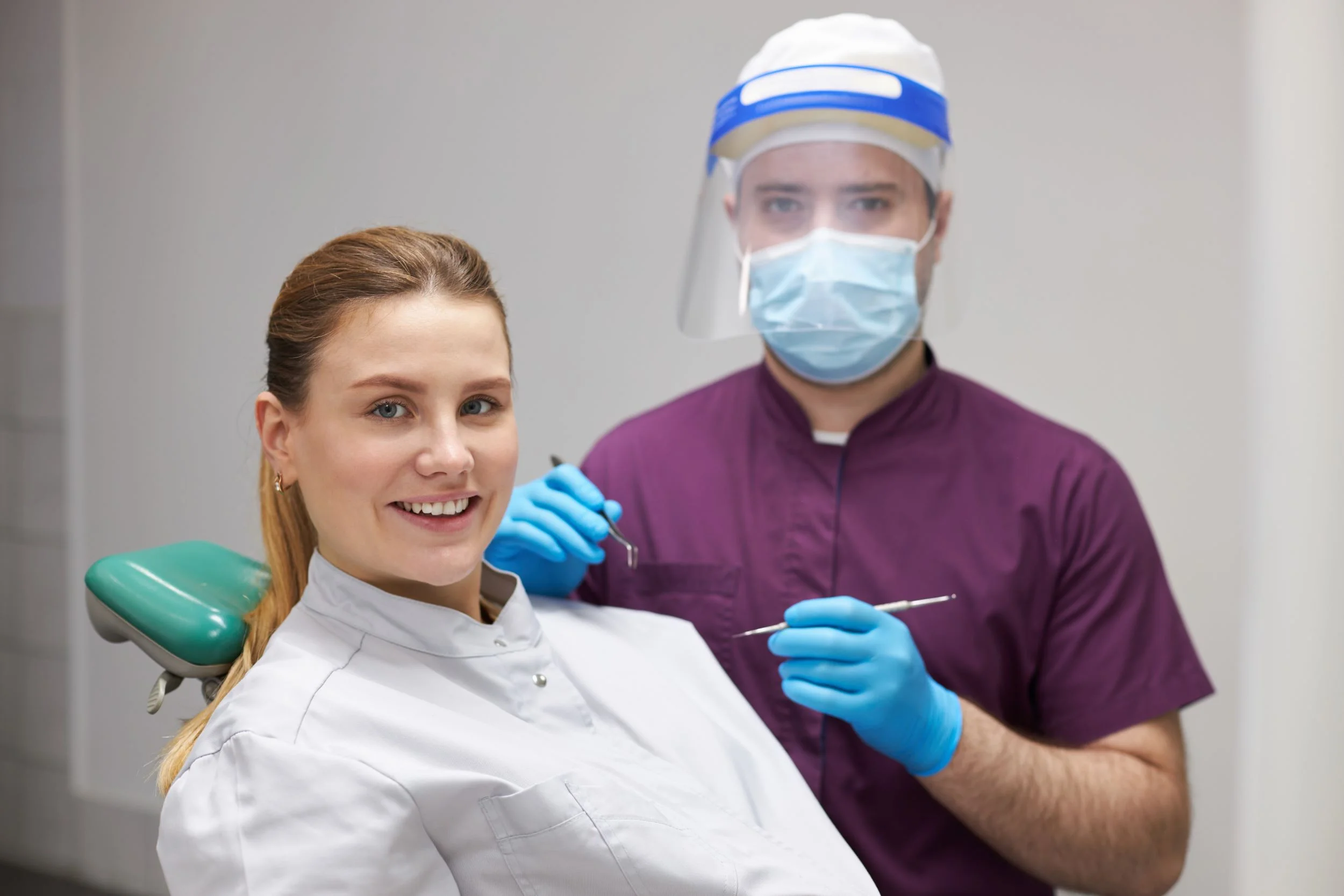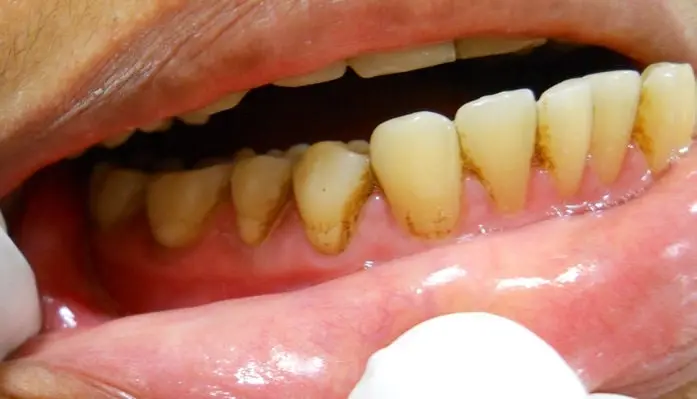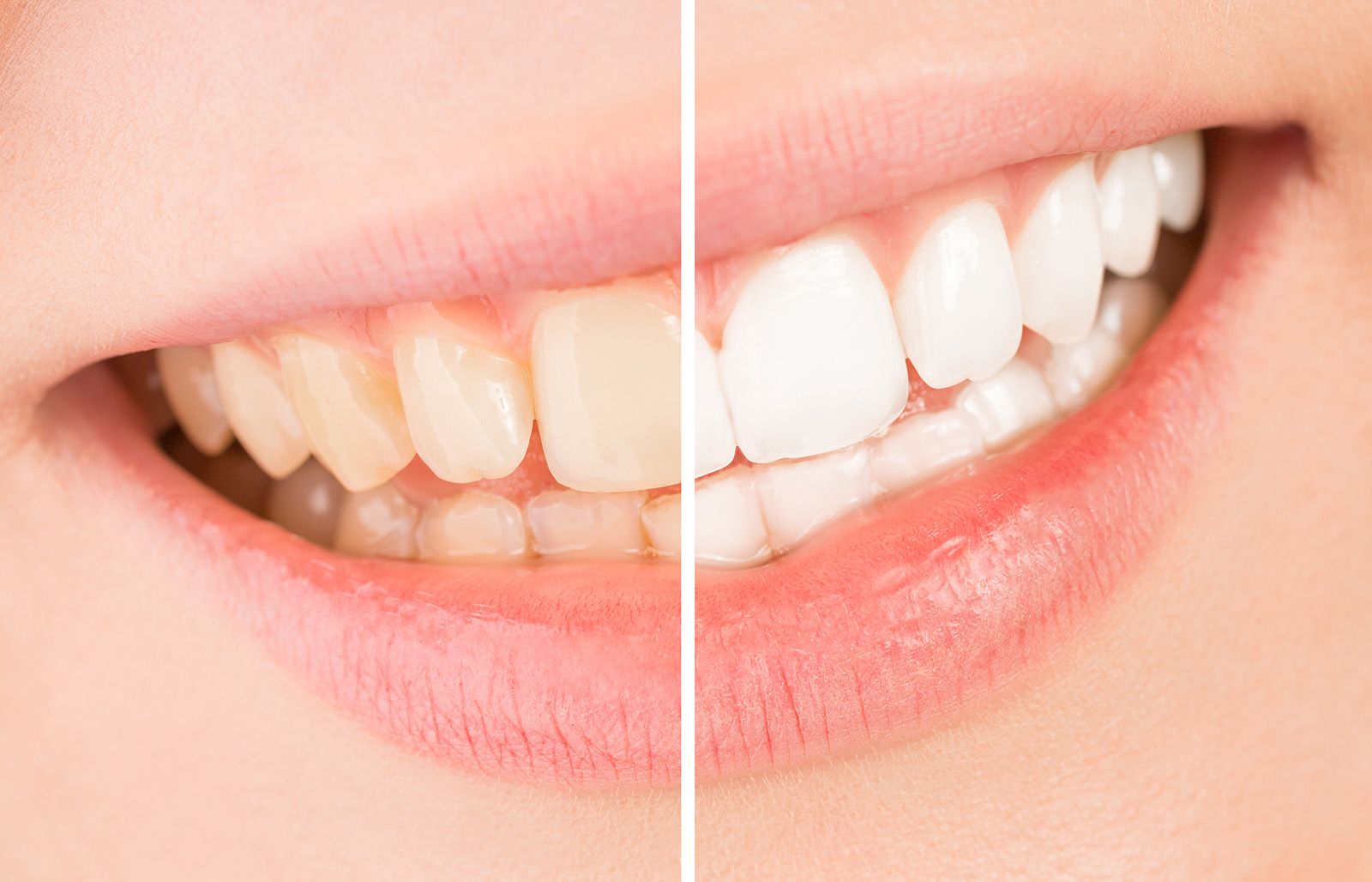Last Updated on: 10th March 2025, 12:36 pm
A person’s smile is often considered to be the most important aspect of physical appearance and reflects a person’s self-esteem. An impeccable, white and brilliant smile can denote health, hygiene, and well-being.
However, not all people have white teeth. The color of the teeth varies from person to person and can change for various reasons, affecting self-confidence. It is natural to want to eliminate discolored teeth once they appear. That is why we list information on dental stains below, how to avoid them, and options to remove or hide them.
What are the Types of Teeth Stains?
To find the most effective method of removing tooth stains, it is essential to know their origin. Stains on the teeth can be extrinsic (on the outside of the tooth) or intrinsic (part of the tooth’s composition).
Extrinsic teeth stains
These are caused by pigments that come into contact with the external surface of the teeth and adhere to them. They can be caused by:
- Food or drinks: coffee, tea, red wine, red sauces, beets, red fruit.
- Medications: chlorhexidine rinses and iron supplements.
- Tobacco: nicotine can contribute to the development of periodontal disease, oral cancer, tooth loss, reduced healing ability, unpleasant breath, nicotine-related mouth inflammation, and discolored teeth.
- Bacteria: that adhere for a long time to the tooth and can appear as a yellowish or orange pigmentation.
- Exposure to metals: people who work with copper or iron.
Intrinsic teeth stains
These occur when there are alterations in the internal composition of the tooth, thereby changing its color. They can be caused by:
- Diseases: some diseases can cause alterations in the formation of the outermost layer of the tooth (enamel) or the innermost layer (dentin), giving rise to yellowish, brown, and in some cases, green spots.
- Medicines: the consumption of some antibiotics such as tetracyclines during pregnancy or early childhood modifies the composition of the tooth when it is still in formation, generating a grayish coloration.
- Dental: caries entails the loss of minerals from the tooth, which when advanced, generates cavities. But in the early stages, the mineral loss is seen as whitish or brown spots.
- Dental materials: metal cures, cement and other materials used in dentistry can stain the tooth from the inside, making it look darker or yellow.
- Pulp necrosis: this is the death of the dental pulp (the nerve and blood vessels inside the tooth) that can happen due to trauma or decay. The tooth usually becomes darker and grayer. These color changes are sudden or can appear many years later.
- Fluorosis: when fluoride is applied to the tooth in the form of toothpaste or gels, it can fortify the tooth against decay by being incorporated into the tooth structure, as well as inhibiting the bacterial production of tooth-damaging acids. But when too much fluoride is consumed during tooth development, its formation can be disrupted. This can happen from water with a high fluoride content in some geographic areas or from ingestion of fluoridated toothpaste and rinses during childhood, leading to white or brown-stained teeth.
Do Teeth Change Color with Age?
The answer is yes. Teeth have two layers: an inner layer called dentin and an outer layer called enamel. The dentin is yellowish in color and is what usually gives the tooth its color. The enamel is usually more transparent. Over the years, two things can happen:
- The enamel wears away and becomes thinner, making it easier to see the yellowish color of the dentin.
- The dentin becomes thicker; and when this happens, light passes through the tooth less easily, making it appear more opaque.
That is why in older people, teeth tend to look more yellowish, no matter how much care they have taken with their oral hygiene throughout life.
Is it Possible to Remove Dental Stains Naturally at Home?
The desire and need for a bright white smile are becoming more and more popular. For this reason, on the internet, it is possible to find a large number of home techniques that, although they promise to whiten teeth, no studies guarantee their effectiveness and safety. In fact, it has been shown that brushing teeth with citrus fruits, activated carbon, vinegar, or other acidic or abrasive substances cause irreversible harm, damaging the enamel and exposing the dentin, which can cause greater sensitivity and an even more yellow appearance.

There are also some over-the-counter cosmetic products such as whitening toothpaste that can be effective in removing some extrinsic stains, or whitening strips that can help lighten the color of the teeth. However, it is important to verify that these are endorsed by the American Dental Association (ADA). These at-home whitening products are much more effective if applied after an in-office tooth cleaning.
Can the Appearance of Stains on the Teeth be Avoided?
Although sometimes stains on teeth are due to factors beyond the control of the patient, most extrinsic stains can be avoided. Here are some ways to avoid staining your teeth
- Maintain adequate oral hygiene: The best way to prevent pigments from adhering to the tooth is to immediately remove them with tooth brushing and flossing, especially right after eating.
- Avoid excessive drinks with pigments: coffee, tea, cola, and red wine, and in case of consumption, carry out immediate oral hygiene.
- Use a straw or straw (if possible reusable) to avoid direct contact with substances with the surface of the teeth.
- Do not smoke: Quitting cigarettes is an excellent idea since, in addition to reducing the risk of dental stains, it brings many benefits for overall health.
- Avoid the intake of fluoride toothpaste and rinses in children.
- Visit the dentist every 6 months to clean and control any dental restorations already in place.
How to Remove Stains from Teeth Safely?

For the safest and most effective treatment, it is advisable to see a dentist, who will be able to determine the cause of the discoloration and guide the patient on available solutions. Here are some techniques to remove stains from the teeth:
1. Dental prophylaxis: this is a deep brushing of the teeth carried out in the dentist’s office, which in many cases serves to eliminate superficial stains.
2. Microabrasion: thus consists of superficial and controlled wear of the defective enamel with a rotary device and an abrasive paste. When done by a dentist, it is an excellent option to remove stains from fluorosis and cavities. Of note, it is a safe and minimally invasive procedure.
3. Teeth whitening: the process consists of the application of a substance called hydrogen peroxide on the surface of the teeth, which imparts a whiter color. It can be done in-office or at home:
- Office teeth whitening: this consists of the direct application of the product on the teeth, to protect the gums. In some cases, LED light or heat is used. The dentist will take photographs of the initial and final color of the teeth. It is possible that after the procedure, the use of specific products is advised to maintain the whitening effect.
- Teeth whitening at home: Customized molds or trays in the shape of the patient’s mouth are often used; they contain a gel that helps whiten the teeth. Dentists use this method after an in-office whitening session for more effectiveness. It is important to carefully follow instructions to avoid unwanted effects since if these products are used for a long period of time, they can cause dental sensitivity or burns in other parts of the mouth.
The techniques mentioned above are effective in removing stains on natural teeth. In patients with crowns, veneers or tooth-colored cures, it will be necessary to replace them if the patient wants to change their color.
Of note, although most dental stains can be successfully removed or diminished with these methods, certain types of discoloration do not completely disappear with teeth whitening. In these cases, some options can hide the affected surface and achieve a natural appearance, such as composite restorations, veneers, and crowns.

Stains and discoloration of the teeth are frequent causes of concern. The various methods to eliminate them depend upon their origin. Thus, it is essential to visit the dentist to access the case and prescribe the most appropriate, safe, and effective treatment. Although not all types of dental stains can be completely eliminated, the dentist has various solutions to improve aesthetics and achieve a harmonious and bright smile.
Contact us
If you have any questions about this or other topics, you can contact us at Channel Islands Family Dental as well as our page on Facebook. We look forward to your visit and we will make a timely diagnosis. Our dentists in Oxnard, Santa Paula, Ventura, Newbury Park, and Port Hueneme will be able to guide you toward the best treatment to take care of your health and give you back your best smile.
Bibliography
1. ADA Science & Research Institute, LLC. (2022, August 16) Whitening. ADA. https://www.ada.org/resources/research/science-and-research-institute/oral-health-topics/whitening
2. Cleveland Clinic. (Apr 06, 2020) Tooth Discoloration: Causes, Treatment & Prevention. Cleveland Clinic. https://my.clevelandclinic.org/health/diseases/10958-tooth-discoloration
3. Lindberg, S. (2020, February 14). What Can Cause Tooth Discoloration and Stains? Healthline. https://www.healthline.com/health/tooth-discoloration
4. Ifraimov, B. (2022, May 25). 2 Types of Teeth Stains (And How They Can Be Prevented). 209 NYC Dental. https://www.209nycdental.com/types-of-teeth-stains/
5. Naidu, AS, Bennani, V., Brunton, JMAP, & Brunton, P. (2020). Over-the-Counter Tooth Whitening Agents: A Review of Literature. Brazilian dental journal, 31(3), 221–235. https://doi.org/10.1590/0103-6440202003227
6. Carey CM (2014). Tooth whitening: what we now know. The journal of evidence-based dental practice, 14 Suppl, 70–76. https://doi.org/10.1016/j.jebdp.2014.02.006
















